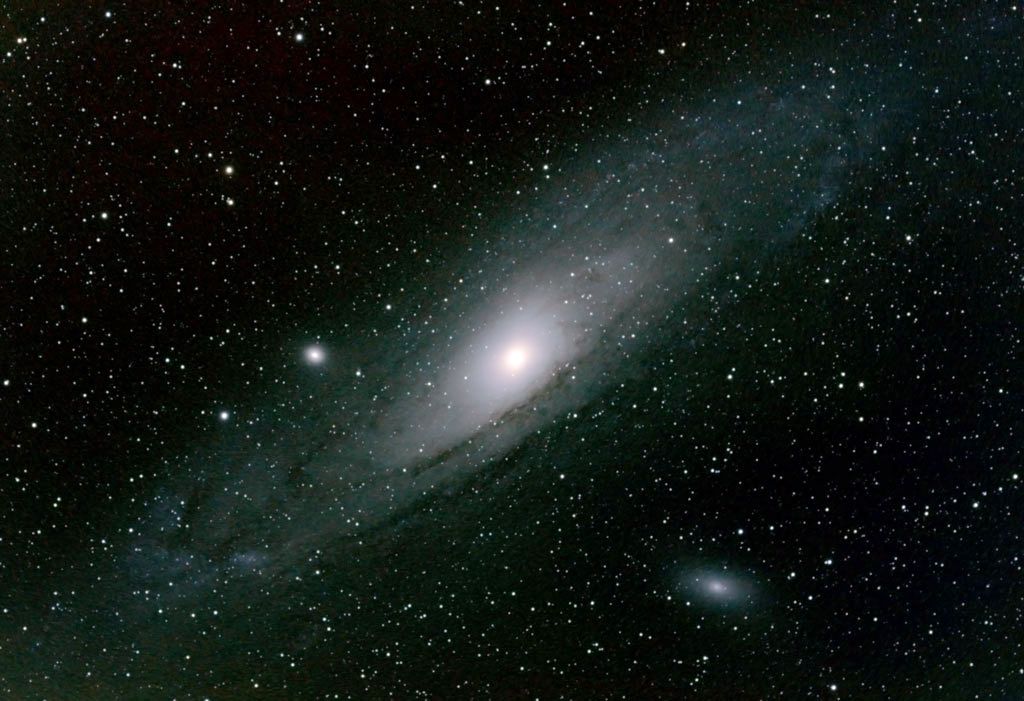And that’s what I got after much struggling. Dark frames turned out to be a no go, as I set the computer and the camera to shoot them for the rest of the night while I enjoyed the much deserved sleep, and it turned out that the temperature in the little storage room where I keep my stuff kept rising during the night. Despite the room being outside and not being really that well insulated, the sensor’s temperature went from -12, to -10, to -7, to -4, to -3 and finally reaching -2. All those are centigrade degrees, of course.
Not too bad, I said to myself: forty-six frames ought to compensate for the lack of dark frames, to some extent. Indeed the noise is under control, in the end result.
So let’s mention some interesting factual data about our neighbor, M31, the closest spiral galaxy. Two and a half million light years far, it’s nothing but a stride away. Two-hundred thousand light years across, this beast holds a staggering trillion stars. This mesmerizing amount of stars is scattered in the shape of a ring broken up by interference waves. A spiral galaxy without the spiral arms? That’s correct. The cause of that is M31’s dwarf companion: M32. This tiny galaxy appears to have plunged right through M31 around two-hundred-ten million years ago, while dinosaurs where feasting on each other unaware of all this.
Rushing through the large galaxy, M32 has created a pattern of interference with its gravity, thusly breaking up the spiral arms, which now have settled into a ring.
But M32 is not the only galaxy that M31 is going to cannibalize. Guess who’s next? It’s us. Our own Milky Way and M31 are currently dancing a death dance that will bring the two to a collision in about five billion years from now. Being M31 much larger than the Milky Way, we will become engulfed, cannibalized and assimilated, and our own identity gone forever.

